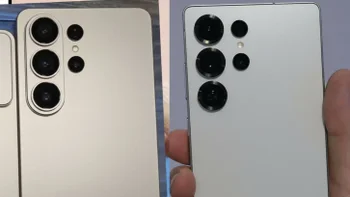LG G Flex 2 vs Samsung Galaxy S5: first look

Design


The curve of the G Flex 2 adds a level of comfortability when held, and LG's signature power and volume button placement on the back of the device is also present here, giving us good accessibility to said controls via our index finger. With the Galaxy S5, Samsung didn't look to wow us with anything off-the-charts unique – the

Display


The two displays are protected by Gorilla Glass 3, though, LG says it has added some of its own sugar and spice to the G Flex 2's panels, resulting in a 20% tougher, yet still flexible, protective film.
Interface
When one says “Android customization” - Samsung's name is surely the first to come to mind. However, LG's own custom interface doesn't fall far behind, too – full of its own animations and customizable options, the UI is prone to stuttering, even on flagship-class hardware.
Sammy's TouchWiz interface, which adorns every Galaxy smartphone, is brim-packed with features as well, and – even though Samsung constantly tries to battle this – carries a bad fame for often presenting random hiccups for no apparent reason, no matter the hardware it has been stuck to.
In terms of functionality – the TouchWiz, no small thanks to Samsung's “hit-or-miss” tactic of throwing in whatever comes to mind and seeing what sticks, does have some cool features, such as Smart Stay, Multi Window, gesture commands for waking up or silencing the device, one-handed mode, etc.
Now, thanks to the fact that the G Flex 2 sports Qualcomm's latest flagship-class SoC – the 64-bit, octa-core Snapdragon 810 – it does blast through its menus faster and smoother, whereas the S5, while not annoyingly so, tends to show us the occasional stutter.
Processor and memory
As we just mentioned, the LG G Flex 2 is the first announced flagship-class smartphone to bear Qualcomm's latest and greatest chipset – the Snapdragon 810. Loaded with four ARM Cortex-A57 and four ARM Cortex-A53 cores, the Adreno 430 GPU, being 64-bit capable, and coupled with the hefty 3 GB of RAM (on the 32 GB model) – the SoC will surely allow LG's banana-like handset to blast through anything you throw at it, as well as keep it in the race for the long run, as smartphones are just now entering their own 64-bit era.
In comparison, the Galaxy S5 rocks the slightly outdated Snapdragon 801, which is loaded with four Qualcomm-propriatery Krait 400 cores, clocked at 2.5 GHz, the Adreno 330 GPU, and coupled with 2 GB of RAM. Indeed, while stuck to the 32-bit architecture, the S5 still has a lot of life left, before you could call it obsolete, and let's be honest – the hardware may be making the jump to 64-bit right now, but app developers will surely lag behind as long as they can, because they, naturally, need to optimize sales.
So, while people who generally wish to stay on the bleeding edge of technology will look to ditch the S5 as soon as possible, maybe for the G Flex 2 due to its many unique tech feats, the Galaxy S5 can still be a potent daily driver for the casual folk.
Camera

The Galaxy S5's camera can hold it's own as well – sporting a 16 MP sensor and incorporating Samsung's ISOCELL technology – the snapper is among the best to be found on a smartphone. Sammy also employs a fast auto focus tech, though, instead of using laser, Samsung uses phase detection technique, which, in our extensive tests, showed itself to be ever so slightly faster than LG's laser-assisted system.
So, both snappers are pretty equal opponents, though, the G Flex 2 has the upper hand due to its OIS capabilities. Of course, we'd get a much clearer picture once we've had more time with both devices on hand for some elaborate camera shootouts.
Expectations
The LG G Flex 2 solves the low PPI issue that tainted its predecessor's screen, is more compact, while retaining the curved / flexible properties, and looks even cooler, with its new, fresh finishes. It's more than just a pretty face, though, as it sports the most recent, top-shelf SoC that industry leader Qualcomm is offering, a generous amount of RAM, and a good camera. The handset will definitely have the hardware to survive the 2015 flagship onslaught, and the looks to attract the ones who seek unique, yet comfortable designs. To top it off, the cool self-healing backplate definitely adds to the geek-cred and rounds it off as a techies' dream device.

Follow us on Google News













Things that are NOT allowed:
To help keep our community safe and free from spam, we apply temporary limits to newly created accounts: